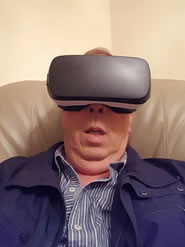I’m a big fan of Orville and Wilber Wright; so much so that I earnestly believe that a detailed study of their inventive methods should be core curriculum for every engineering student. With this in mind, I guess it goes without saying that I was a bit taken back when I read an article suggesting the inventors of controlled flight were patent trolls.
In view of the number of years they spent building, demonstrating, and trying to commercially manufacture and sell their technology, no one could rationally consider them a non-practicing entity, the prevailing definition of a patent troll today.
If the Wrights were attempting to enforce more patent rights than they were entitled to, why was there never a single verdict in an American court of “non-infringement”?
Yes, they aggressively enforced their claims, which some perceive as being directed to the wing-warping concept rather than the disclosed means to achieve it. But what is that adage about throwing the first stone? Everybody has their own opinion on claim scope and this often forwards their own interests.
The Wrights also had one big advantage. The courts gave their patent, U.S. 821,393, “pioneer patent” status, something, at the time, awarded to rare patents that covered a major technological advance into a broad new field. Such pioneer patents can receive extraordinarily broad claims since, by definition, there may not be any prior art in the field. If there already exists a load of prior art for a similar invention, it seems unlikely that the innovation is as revolutionary as believed.
A few other acknowledged pioneer patents were awarded to Samuel Morse for an electrical telegraph (U.S. 1,647), to Elias Howe for a sewing machine (U.S. 4,750), and to Alexander Bell for a telephone (U.S. 161,739). Although arguments could be made for and against the validity and scope of each of these patents, including the Wrights’, each benefitted greatly from their pioneer patent status.
In 1889, the U.S. Supreme Court summarized the pioneer patent doctrine as “Where an invention is one of a primary character, and the mechanical functions performed by the machine are, as a whole, entirely new, all subsequent machines which employ substantially the same means to accomplish the same result are infringements”.
Most will recognize this doctrine to be quite similar to what is now known as the Doctrine of Equivalents. There is a very important difference here, however, in that this Supreme Court definition extends only to pioneer patents.
Over the years, the distinction brought up an obvious question in light of the potential benefits. How pioneering do you have to be to be a pioneer? Legal wrangling over this question eventually led to application of the DOE being stretched into a descending slope covering all patents, even if the doctrine was applied inconsistently. The more pioneering the patent was considered to be, the more generously the DOE was applied.
The sloped distinction seemingly came to an end in a 1988 Federal Circuit Court case entitled Texas Instruments, Inc. v. United States International Trade Commission. In the decision, Judge Newman stated “a patent’s ‘pioneer’ status does not change the way infringement is determined”. In other words, apply the DOE equally to all patents.
One of the greatest challenges in patent law is how to interpret claims to provide proper protection for the disclosed invention while keeping the boundaries of the monopoly reasonable. Regardless of intentions or qualifications, equal application of the DOE during claim construction can be subjective. Texas Instruments could be viewed as an early attempt by the Federal Circuit to formulate a guideline simplifying this determination by returning these boundaries closer to a requirement for literal infringement.
Although not without exceptions, after Texas Instruments the Federal Circuit’s rulings may have tried to follow the guideline by restraining use of the DOE. According to some surveys the success rate for patentees in cases where infringement depends upon the DOE has fallen to perhaps 10%, leading many experts to declare the doctrine functionally if not literally deceased.
This author will not argue for a doctrine that affords more extended scope to a few subjectively selected “pioneer” patents than is afforded to “incremental” patents. Truly revolutionary patents already have the distinct advantage of extraordinarily broad claims due to lack of prior art in that field. Combining this benefit with the availability of continuation and reissue applications to further tweak claims automatically gives the pioneer patent over-sized clout in the industry. This is well deserved with a revolutionary invention, but the enhanced clout should be limited to what was actually invented. Here, Judge Newman was right.
Yet the experts are wrong about the demise of the DOE. It may be wounded but is still considered in some cases as high as the Supreme Court. That is a very good thing. An inventor absolutely has to be able to prevent a competitor from merely exchanging a wiggle with a waggle to circumvent claims. Rather than needing more literal claim interpretation, maybe the courts have really been saying that claims are in need of a more literal interpretation of the “substantially the same” portions of the DOE.
Patentees can and will take advantage of any legally provided extended claim scope, but does that make the Wright Brothers trolls? Get serious. If the novel notion that a practicing entity protecting their patent rights makes them a troll is true, it would certainly shed a different light on the big name smartphone patent wars of late. Imagine the destruction if their patents enjoyed pioneer status.
[Views expressed in in this article are exclusively those of the author and do not necessarily reflect the views of NAIP or any of its affiliates. All images are in the public domain.]
 |
|
| Author: |
Daniel Gross |
| Current Post: |
Senior Engineer, Quality Control Manager, NAIP |
| Education: |
BS Computer Science and Engineering, University of Nebraska
Graduate work in the Human Computer Interface |
|
|
|
| Facebook |
|
Follow the IP Observer on our FB Page |
|
|
|
|
|
|
|



